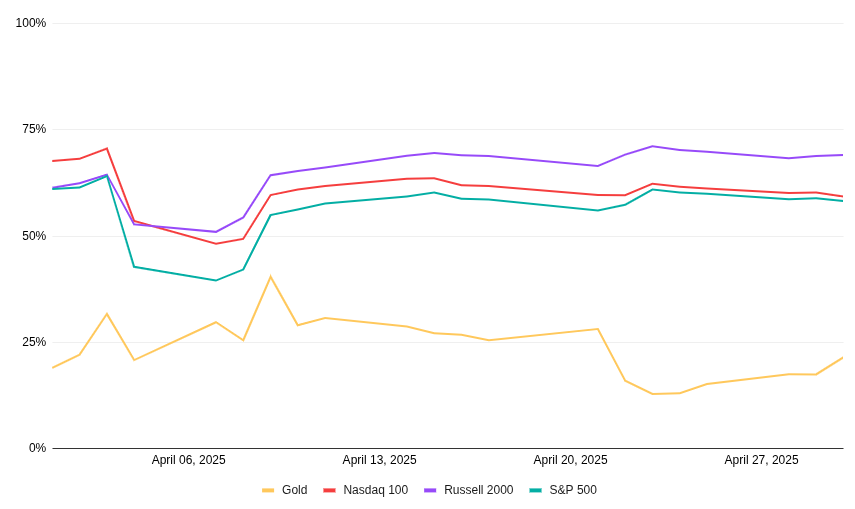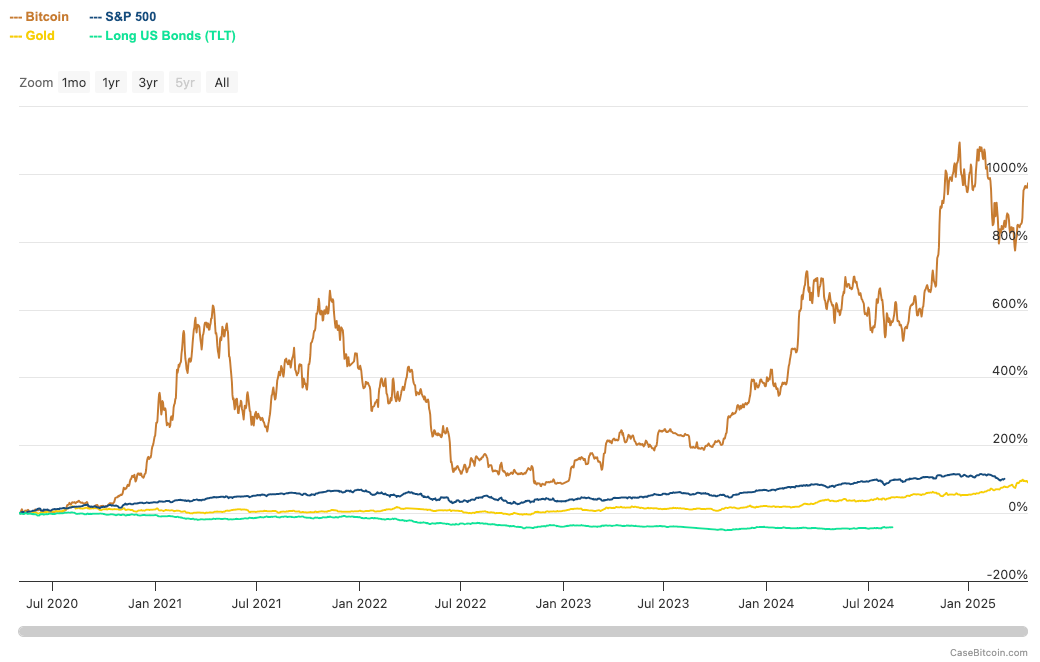
In financial markets, making assumptions based on short-term observations is a fool’s errand, as significant trends develop over months and years, not days or weeks. But as investors evaluate bitcoin’s role in their portfolios, the events of April are worth analyzing in order to understand the asset’s emerging reputation as a store of value.
Backdrop of volatility
The turbulence sparked by President Trump’s tariffs announcement on April 2 sent stock prices plummeting the following day, with the Nasdaq 100 and S&P 500 falling 4.8% and 5.4%, respectively. Bitcoin followed suit as the VIX Volatility Index hit levels not seen since the early days of COVID and fears of retaliatory trade measures prevailed.
However, bitcoin’s price began to recover sharply within days of the announcement, causing its correlation with both the Nasdaq 100 and S&P 500 to fall below 0.50, before those correlations rose again as the April 9 pause on tariffs brought back “risk-on” mode.
Bitcoin’s correlations to traditional markets in April

Source: Hashdex Research with data from CF Benchmarks and Bloomberg (April 01, 2025 to April 30, 2025). 30-day rolling correlations (considering only workdays) between bitcoin (represented by the Nasdaq Bitcoin Reference Price Index) and TradFi indices.
This short-term observation matters because it supports the changing nature of how investors perceive bitcoin. While some still categorize bitcoin as a high-beta “risk-on” asset, institutional sentiment is beginning to reflect a more nuanced understanding. Bitcoin recovered faster than the S&P 500 in the 60 days that followed the COVID outbreak, Russia’s invasion of Ukraine and the U.S. banking crisis in 2023, events in which it demonstrated resilience and a profile increasingly aligned with that of gold during stress.
These periods of decoupling establish a pattern where bitcoin displays its antifragile properties, allowing allocators to protect capital during systemic events, while still outpacing the performance of stocks, bonds and gold over the long haul.
Bitcoin vs. traditional assets, 5-year returns

Source: CaseBitcoin, Return data from May 1, 2020 to April 30, 2025 (CaseBitcoin.com)
The path to digital gold
Maybe more compelling than bitcoin’s longer-term returns are the long-term portfolio effects. Even a small allocation to bitcoin within a traditional 60% stock/40% bond portfolio would have improved risk-adjusted returns in 98% of rolling three-year periods over the last decade. And these risk-adjusted returns are markedly higher over longer time frames, suggesting that bitcoin’s volatility from positive returns more than counterbalances short-term drawdowns.
It might still be premature to claim that bitcoin has been universally accepted as “digital gold,” but that narrative, supported by its response to geopolitical events, is gaining momentum. The combination of bitcoin’s fixed supply, liquidity, accessibility and immunity to central bank interference gives it properties no traditional asset can replicate. This should be appealing to any investor, large or small, in search of portfolio diversification and long-term wealth preservation.
免责声明:本文章仅代表作者个人观点,不代表本平台的立场和观点。本文章仅供信息分享,不构成对任何人的任何投资建议。用户与作者之间的任何争议,与本平台无关。如网页中刊载的文章或图片涉及侵权,请提供相关的权利证明和身份证明发送邮件到support@aicoin.com,本平台相关工作人员将会进行核查。




